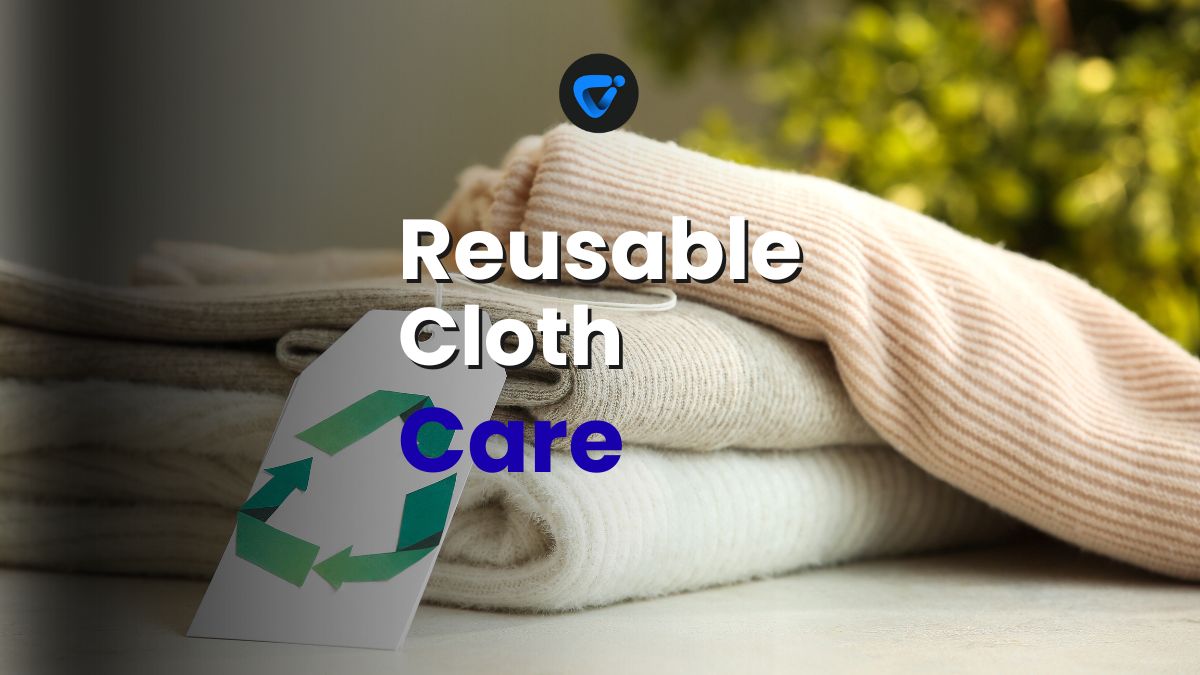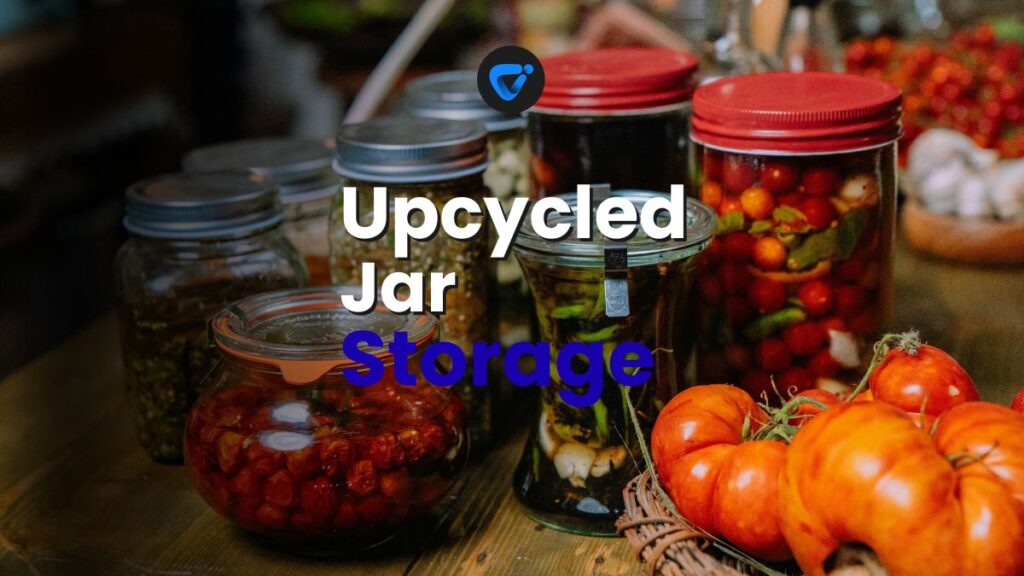
Instead of tossing glass jars into the recycling bin, turn them into smart storage with a touch of creativity. Using upcycled jars can help streamline home organization while reducing waste. These sturdy containers act as reliable allies in keeping life tidy and beautiful.

Composting Basics for Everyday Kitchen Scraps
Turn scraps into soil! Learn composting basics to recycle kitchen waste and create nutrient-rich compost at home.
Many households accumulate empty jars from pasta sauce, jams, or condiments. Rather than letting them collect dust or clutter, upcycled jars offer eco-friendly alternatives for everyday storage. Every reused jar means a small victory for both your home and the planet.
Keep reading to discover actionable tips and innovative examples for using upcycled jars in home cleaning and maintenance. Simple changes, such as these, make a tangible impact and set a positive example for sustainable living.
Clear Steps for Prepping Jars for Safe and Stylish Storage
Begin your upcycled jars journey by prepping containers for a clean, food-safe experience. Make sure each step supports long-term safety and stylish results.
Rinsing is step one. Run hot water inside the jar, swirl soap, and scrub with a bottle brush. Even a drop of adhesive left behind attracts grime, so pay close attention to detail.
Label Removal With Everyday Supplies
Sticky labels peel off more easily after soaking jars in warm, soapy water for 15–30 minutes. Loosen stubborn glue with baking soda and a dab of oil on a scrubber.
If any residue remains, rub gently with your thumb or a reusable cloth. Work around the rim, where bits often hide, for a polished start to your upcycled jars projects.
Once labels are gone, dry each jar thoroughly so water droplets don’t cause odors or streaks during storage.
Avoiding Odors for Food-Grade Jars
Occasionally, a jar may carry a lingering scent, such as garlic or pickles. To neutralize, fill it with a tablespoon of baking soda and warm water, then let it soak overnight.
For persistent smells, add a drop of lemon juice or white vinegar, swirl, and rinse well. Repeat as needed until the jar is fully neutralized and ready for storage applications.
This attention to detail not only ensures safe upcycled jars but keeps them pleasant for pantry, fridge, or closet use.
| Jar Type | Ideal Use | Prep Requirement | Next Action |
|---|---|---|---|
| Pasta Sauce Jar | Pantry Grains | Soak band/ring in vinegar | Attach a waterproof label |
| Jam Jar | Loose Leaf Tea | Baking soda deodorizer | Decorate lid for quick ID |
| Condiment Jar | Screws/Nails | Heated scrub to remove grease | Store upside down for easy access |
| Candle Jar | Cotton pads/Swabs | Freeze, then chip out wax | Place on vanity with label |
| Pickle Jar | Homemade Cleaners | Lemon-vinegar soak | Keep under kitchen sink |
Effective Uses for Upcycled Jars in Home Cleaning Systems
Strategically placed upcycled jars boost cleaning routines by putting supplies within arm’s reach and cutting visual clutter. This means less searching, less wasted product, and a satisfying sense of order.
Assigning a jar for each cleaning product or tool keeps rooms tidy and safe. Use visible jars for frequently used supplies so everyone knows where to find and return them. Clear labeling prevents mix-ups and improves daily efficiency.
Mini-Station Example: Under-the-Sink Kit
Store dish tabs, scrubbing sponges, and cleaning powder in designated upcycled jars beneath the sink rack. Each container can have a simple waterproof label specifying contents and restock reminders.
Organize upcycled jars by task. Assign blue lids for bathroom cleaners, green for kitchen, and red for specialty mixes (like stove-top paste). Color coding speeds up identification and restocking.
Pre-labeling jars with a marker or sticker helps everyone at home find what they need and encourages shared participation in chores.
- Transfer powdered cleaners to dry, wide-mouth upcycled jars; seal tightly to prevent caking and label clearly for safety.
- Stash reusable microfiber cloths in a tall, clear jar to keep them visible, compressible, and easy to grab between swipes.
- Use capped jars for bulk scrubbing pads—keep extras dust-free near bathroom or laundry stations where mess happens fast.
- Corral odd-sized items, like lost sock singles or plastic scrapers, in small upcycled jars to prevent junk-drawer overflow and speed up your search.
- Create a mini airtight jar for natural scouring mixes (like baking soda with drops of essential oil), ready for instant use when sticky messes strike.
Review each upcycled jar every month. Dump worn-out contents and refresh labels to keep your cleaning system nimble and hygienic.
Flexible Pantry Solutions With Upcycled Jars
Reuse upcycled jars for dried beans, lentils, and rice; the clear glass makes it easy to gauge supplies at a glance without opening every container, saving time during meal prep.
- Fill small jars with loose spices or tea; batch label by cuisine or meal type for quick access when cooking, and prevent mix-ups.
- Pour dry pasta varieties into tall jars. Store upright or sideways to fit awkward shelves and keep things neat and visible.
- Upcycled jars keep baking ingredients—like chocolate chips, nuts, or sprinkles—sealed and simple to pour, eliminating plastic packaging waste.
- Collect twist-tie bags in a lidded jar; this simple routine reduces drawer chaos and ensures reusable ties are always at hand.
- Assign a dedicated jar for emergency snacks or lunchbox items; quick-release access helps prevent extra packaging buildup in your pantry.
Rotating contents quarterly ensures freshness. Update labels, refill as needed, and compost the old contents to keep your pantry ready for action.
Visual Cues and Upcycled Jar Customization for Home Maintenance
Customizing upcycled jars gives visual cues that boost consistency in daily cleaning and maintenance. Assigning shapes, patterns, or tags helps everyone at home stick with new routines.
Scenario: Bathroom Cleaning Zone
In the bathroom, line up labeled upcycled jars—one for cotton balls, one for reusable makeup pads, and one holding denture tablets. Assigning dedicated containers makes supplies easy to replenish and keeps the space uncluttered.
Use acrylic paint, waterproof markers, or chalkboard labels on jar lids to signal their purpose. Regularly update labels to reflect changing storage needs and inspire users to keep the area tidy.
Install a small tray to corral grouped jars. When every item has a clear home, it’s easier to keep surfaces clean and restock on schedule.
Scenario: Laundry Room Small-Parts Organizer
Assign upcycled jars for clothespins, sewing supplies, stain sticks, and dryer balls. Arrange each by size and type, using bold labels that say exactly what belongs where.
Repurpose a spice-rack spinner or old baking sheet underneath to keep jars grouped together. This keeps small items off shelves and provides a grab-and-go organizing station for laundry day.
Check jar levels each time you do laundry. Refill or rotate contents to keep maintenance routines smooth and predictable.
Realistic Rules for Safe Food, Craft, and Hardware Storage
Designating jars for food, crafts, or hardware reduces mix-ups and extends the life of every supply. Consistency with cleaning and labeling accomplishes better results across all home projects.
Food-safe jars should never store paint, glue, or toxic hardware. Always dedicate one purpose per jar and label both lid and body.
Labeling for Clarity and Safety
Write the date and contents directly on the jar or use removable labels for regular rotation. Add allergen notes on pantry jars, like “contains nuts,” since clear glass doesn’t hide ingredients.
Use bold, large-font markers for high-use jars in mudrooms, workshops, or laundry rooms. Refresh labels as contents change to support fast identification in busy moments.
If you upcycle a jar that held strong-scented food, use vinegar soaks before assigning it to crafts or hardware, and always air-dry thoroughly.
- Clean jars with super-hot water plus dish soap to remove lingering residue. A brush or bottle cleaner reaches into the corners for thorough results.
- Sort jars by material (glass, plastic), lid type, and size so you’re never hunting for a matching top when switching storage assignments.
- Only use undamaged jars for food. Keep cracked or chipped ones for non-food items like screws, batteries, or nails.
- Schedule a quarterly check—empty, wash, and inspect every upcycled jar to maintain their quality and prevent hidden hazards in your storage system.
- Tightly seal jars to prevent spills, especially for small or powdery materials that could scatter and create extra messes during routine maintenance.
When your system feels easy to use, household members will automatically return items, reinforcing a cleaner and more efficient routine.
Building Sustainable Daily Routines With Upcycled Jars
Creating habits that stick starts with making routines as seamless as possible. Upcycled jars streamline daily cleaning, snack prep, and hobby storage so you spend less time searching and more time enjoying your home.
Choose central locations for essential jars, placing them near sinks, entry tables, or workbenches to prompt consistent clean-up and supply management.
Morning and Nighttime Micro-Guides
At bedtime, return jewelry, toiletries, and small gadgets to labeled upcycled jars on your nightstand or bathroom shelf. In the morning, refill water jars and set out jars for packing lunches or organizing car keys.
Refilling each upcycled jar at the same time daily makes the process automatic. Assign “reset moments”—after dinner, post-shower, or before leaving home—for smooth transitions between tasks.
Store daily use supplies, like bathroom cotton pads or laundry coins, in easy-to-see jars. Colorful or textured lids make items easy to spot even in low light.
Weekly Refresh: Clean, Restock, Reassign
Schedule one day a week for a 10-minute walkthrough: empty and wash upcycled jars, replace worn cloths, and refill main supplies. This prevents backups and eliminates messy build-up in overlooked corners.
Mix aesthetics with function; decorative jars on open shelves inspire continued use. A quick jar rotation routine keeps your system responsive to changing family or seasonal needs.
Repeat these micro-actions every week to enjoy less clutter and faster clean-up all year long.
Conclusion: A Simple Habit With Big Impact
Extending the life of empty containers with upcycled jars transforms everyday cleaning and organization. Each step described shows exactly how to implement this eco-friendly storage with little effort and big returns.
Maintaining clearly labeled, easily accessible jars reduces product waste and supports faster, more enjoyable routines throughout the home. A few small adjustments multiply efficiency while reinforcing eco-conscious habits for everyone at home.
Try these specific approaches to upcycled jars and see which micro-guides fit your routines. Every container reused is a step toward a cleaner house and a gentler footprint. Choose one new habit and build from there.
Frequently Asked Questions
Thoroughly wash jars with hot soapy water, then rinse and dry. For extra peace of mind, run jars through a hot dishwasher cycle to sterilize. Always inspect for cracks before use with food.
Use removable chalkboard stickers or dry-erase tape to label contents and dates. This allows for quick updates as you switch supplies, ensuring clarity even when storage assignments rotate frequently.
Always check the manufacturer’s marking on the jar. Most store-bought glass jars work in the freezer but require gradual temperature changes to avoid cracking. Avoid microwaving metal lids, and never microwave jars straight from the freezer.
Repurpose damaged jars for non-food storage—like storing nuts, bolts, buttons, or coins. Never use compromised glass for food or liquids, as it poses risks of contamination or injury during use.
With careful cleaning and handling, glass jars can last for years in a household. Rotate worn-out lids or jars annually, and recycle any that show signs of wear or persistent stains that regular cleaning can’t remove.

Reusable Cleaning Cloths
Clean greener and smarter! Discover the best eco fabrics, care tips, and simple wins for reusable cleaning cloths.


